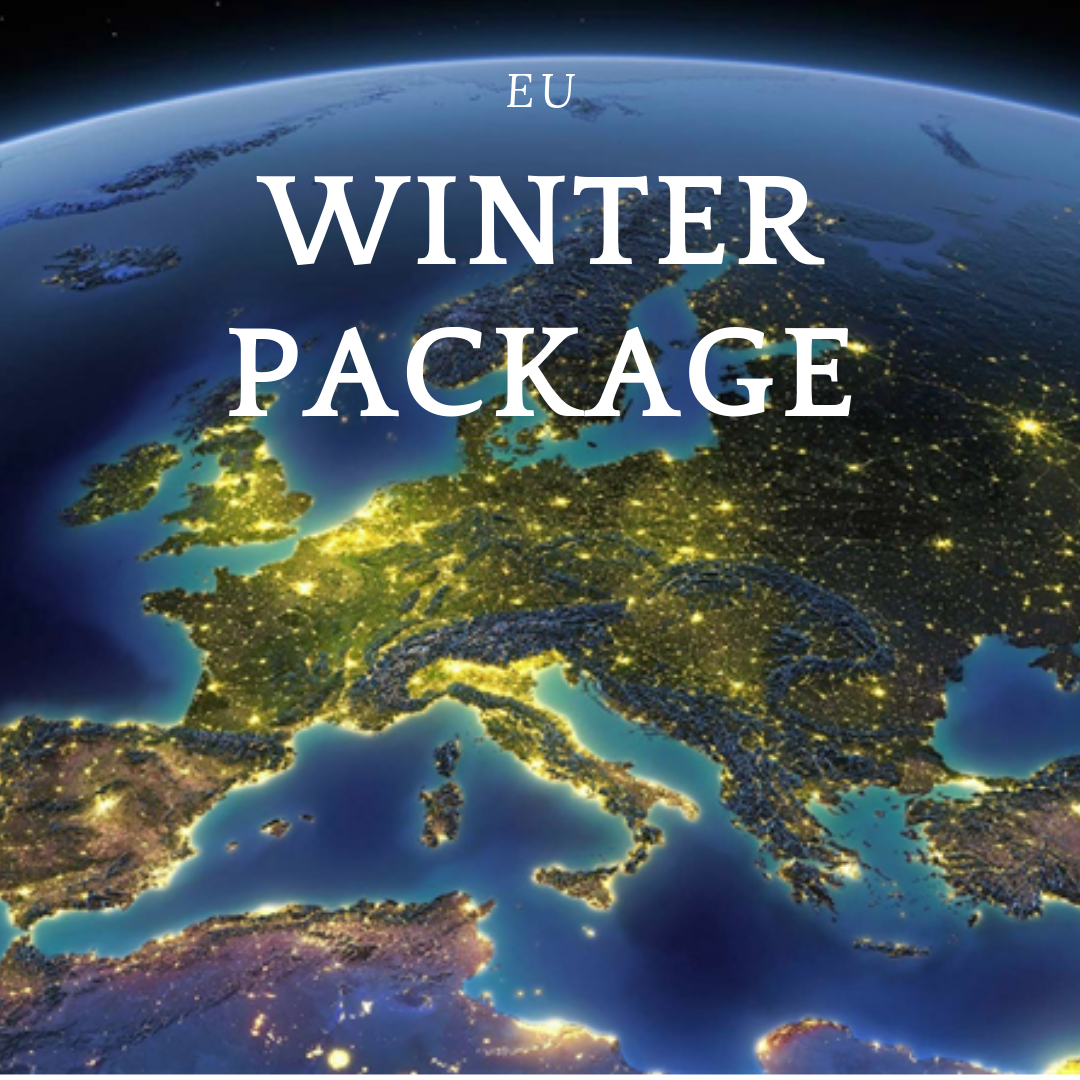
Winter has gone, elections are coming: how is the Winter Package doing?
On 26 March 2019, the European Commission announced that the European Parliament had adopted the four remaining legislative acts that are part of the “Energy Winter Package” introduced by the Commission in 2016 as a comprehensive set of initiatives regarding fight to global warming and climate change. After the approval of these new acts by the EU Council, the Commission Package will have its final legislative outline: this brief article will go over its main elements.
The “Energy Winter Package”
After the formal execution of the Paris Agreement, the European Commission launched in November 2016 a new framework of policies in the energy sector, which aim at the creation of an Energy Union and the implementation of the commitments undertaken in the COP 21 agreement. The framework of the Commission (already mentioned in the Italian section of this blog) is named “Clean energy for all Europeans”and commonly known as “Energy Winter Package”.
The Package is based on the introduction of two new general environmental sustainability objectives for 2030: the production of energy from renewable sources of at least 32% and the increase in energy efficiency of at least 32,5%.
The legislative acts to implement the Package
In order to reach its goals, the Winter Package introduced the principle of “energy efficiency first”and identified its other priorities in the EU’s global leadership on renewable energies and in the protection of consumers. The Package’s implementation was based on the adoption of both legislative and non-legislative acts, which regarded some of the most important areas of EU environmental and energy policy.
The eight proposals of legislative acts by the Commission were the following:
- new Directive on energy performance of buildings;
- new Directive on renewable energy sources;
- new Directive on energy efficiency;
- Regulation on the governance of the Energy Union and Climate Action;
- Regulation on the internal electricity market;
- Directive on internal electricity market;
- Regulation on electricity risk-preparedness;
- Regulation on the Agency for cooperation of the regulatory authorities in the energy markets.
The first four acts mentioned above were definitively approved and entered into force during 2018 as, respectively:
- Directive (EU) 2018/844 of 30 May 2018 on energy performance of buildings that amends Directive 2010/31/UE and Directive 2012/27/EU;
- Directive (EU) 2018/2001 of 11 December 2018 on the promotion of the use of energy from renewable sources;
- Directive (EU) 2018/2002 of 11 December 2018 that amends Directive 2012/27/EU on energy efficiency;
- Regulation (EU) 2018/1999 of 11 December 2018, on the Governance of the Energy Union and Climate Action.
The four remaining proposals, as mentioned above, were adopted by the European Parliament on 26 March 2019: these are the Regulation and Directive on electricity, the Regulation on risk-preparedness and the Regulation on the Agency for cooperation of European regulators (ACER). Such acts are expected to be finally approved by the Council of EU (which has already provisionally agreed on the new measures) in May, just before the end of the current Parliament’s sessions and the new European elections.
The contents of the acts
Directive (EU) 2018/844 introduces some significant modifications to the existing directives on energy performance of buildings (Directive 2010/31/EU) and energy efficiency (Directive 2012/27/EU). Such amendments include the obligation for the Member States to adopt a national long-term strategy to support the energy efficient renovation of public and private buildings. The new Directive introduces also a buildings’ “smart readiness indicator”, which shall be exactly defined by the Commission before the end of 2019 and shall evaluate the capacity of a building or a building unit to adapt its operation to the needs of the occupant and of the grid, as well as to improve its energy efficiency and overall performance. The new rules also provide for the installation of automatic devices that set the temperature levels as part of interventions that install or substitute heating generators, as well as for the intensification of rules on heating and cooling systems inspections and on buildings automation.
Another significant modification refers to the infrastructures for the development of electromobility: Directive (EU) 2018/844 introduces the obligations to install the necessary facilities for electric vehicles recharging points in residential and non-residential buildings.
Directive (EU) 2018/2002 modifies Directive 2012/27/EU by introducing obligations to reduce the final energy consumption for Member States, coherent with the general EU energy efficiency target (32,5% before 2030). The Member States have different possible choices on how to fulfill the consumptions’ reduction obligation and on how to measure it. The other modifications to Directive 2012/27/EU aim at reinforcing the use of smart metering and the effective information of final customers on the consumptions.
Regulation (EU) 2018/1999 is one of the most significant new instruments introduced by the Winter Package and essentially establishes a coordinated and coherent energy governance process between the European Commission and the Member States. Thanks to the new instruments, the EU and the Member States will be able to comply with their international climate obligations, through the development of integrated national energy and climate plans that will replace the several sectoral plans gradually introduced by EU law in the areas of energy and climate change.
The new Directive on renewable energy sources (Directive (EU) 2018/2001) sets the goals concerning the share of energy gross final consumption from renewable sources, and provides for common principles regarding support instruments for renewable energy projects at national and EU level, sharing of data and joint projects between Member States, authorization processes in the Member States’ systems, information and regulatory rights for consumers and “prosumers”.
The Regulation and Directive proposals on electricity market design contain rules regarding consumers’ rights and information instruments (smart metering, information on consumptions, new contractual standards), strengthening of competition in the European electricity market, principles in favor of production from renewable sources and efficiency measures (such as energy storage, elimination of subsidies for high emission plants).
The risk-preparedness Regulation proposal includes rules on electricity crisis risk assessment and management, with cooperation instruments and plans for Member States regarding such risk, as well as the measures to implement in case of crisis.
Finally, the proposal of Regulation on the Agency for the Cooperation of Energy Regulators (ACER) strengthens the already existing EU agency for support and coordination of national energy regulatory authorities, by assigning to it oversight powers on decisions and entities with cross-border relevance for the EU energy market, reinforcing its role in the EU decision making process regarding energy regulation, modifying some aspects of its organization and budget.
Towards a greater integration of energy and climate in EU and Member States’ policies
The Regulations already approved or to be approved in May enter into force immediately after their publication (with a date of application of 1 January 2020 for the electricity Regulation). The Directives will have to be transposed into national law within 18-20 months from their date of publication.
All these instruments have in common the idea of a better integration of energy and environmental policies, with the main and historical goal of fighting climate change and assuring a sustainable development for Europe and the world.
We shall continue to monitor the approval and implementation process of this Package, hoping that the ambitious goals set will eventually be achieved.






